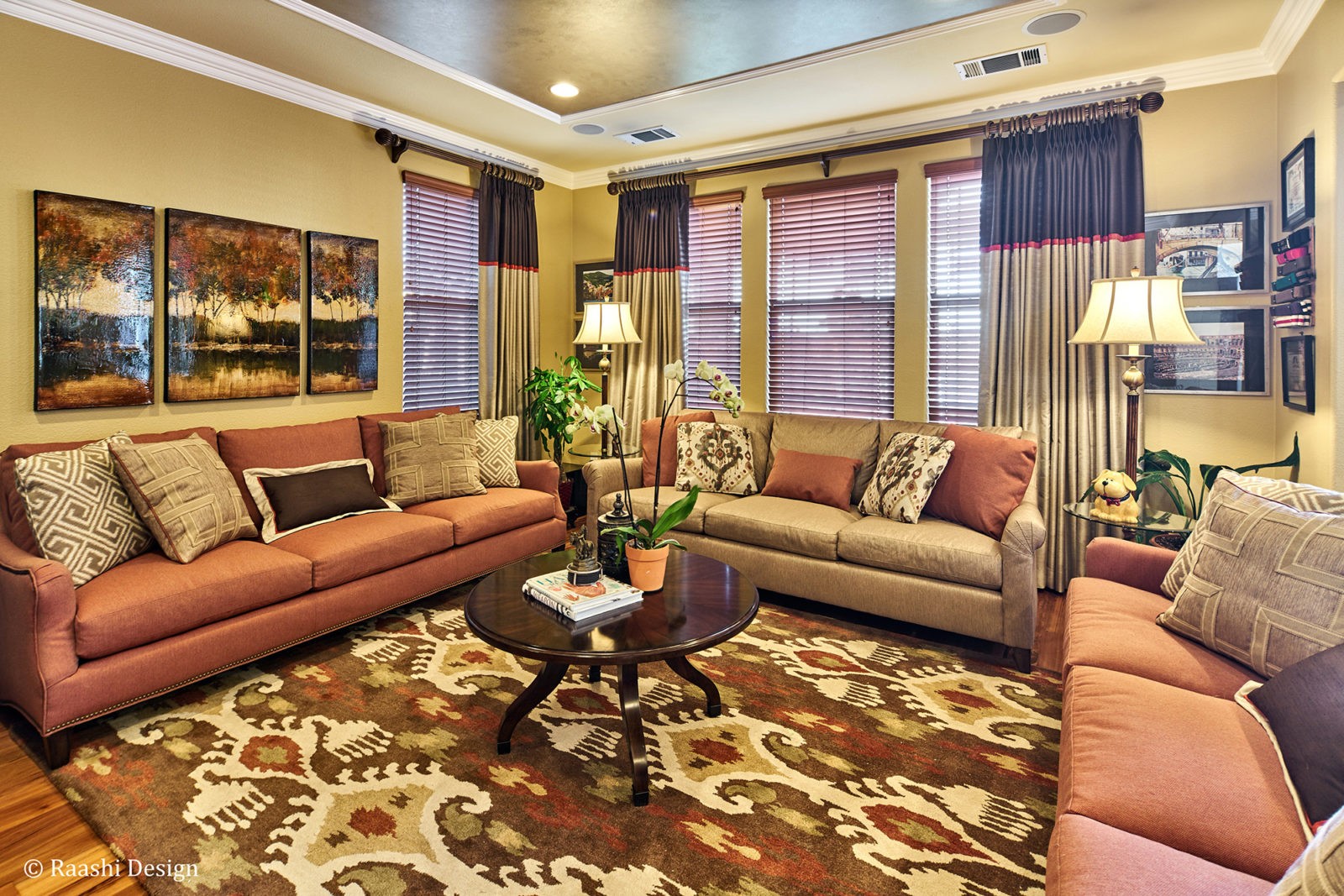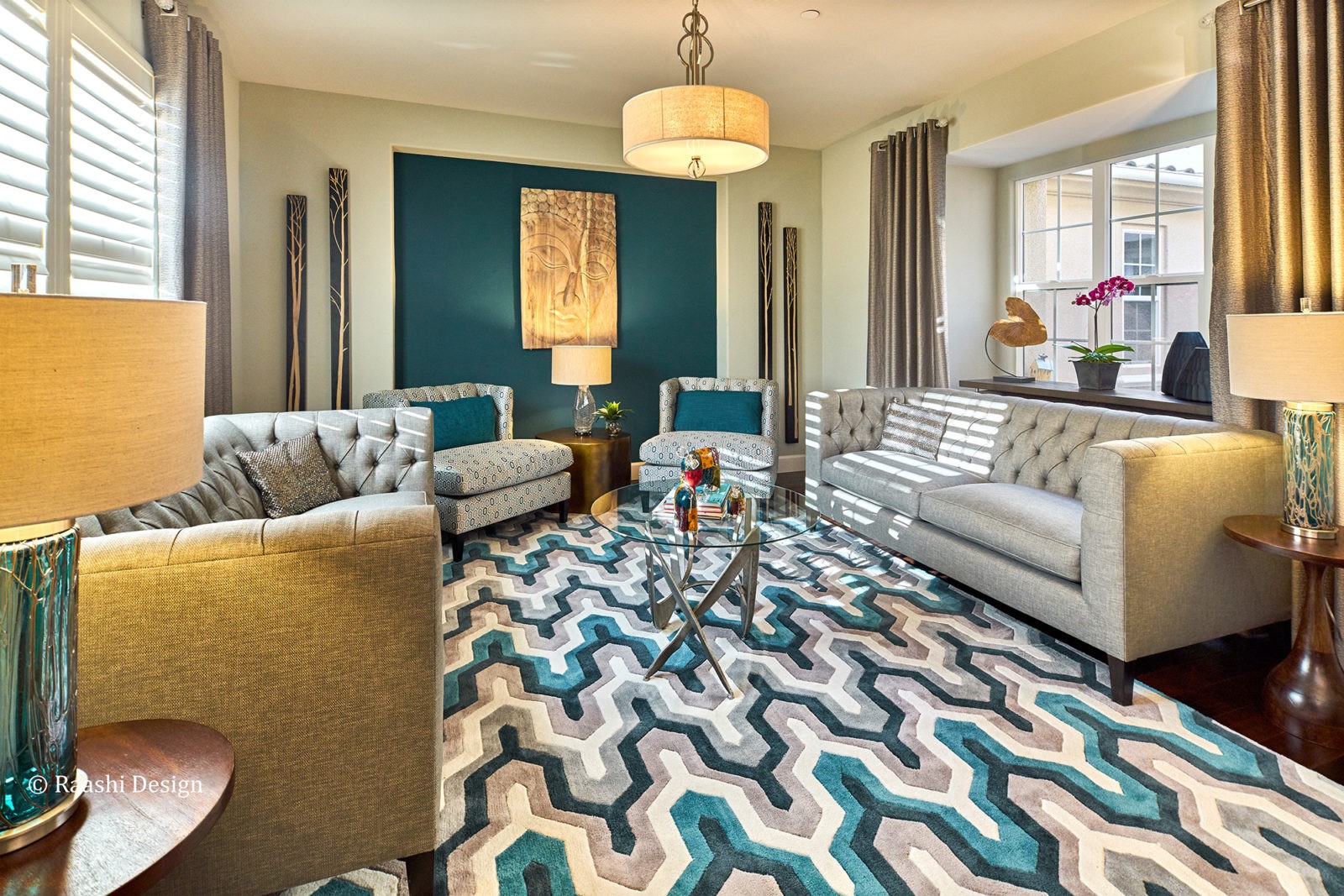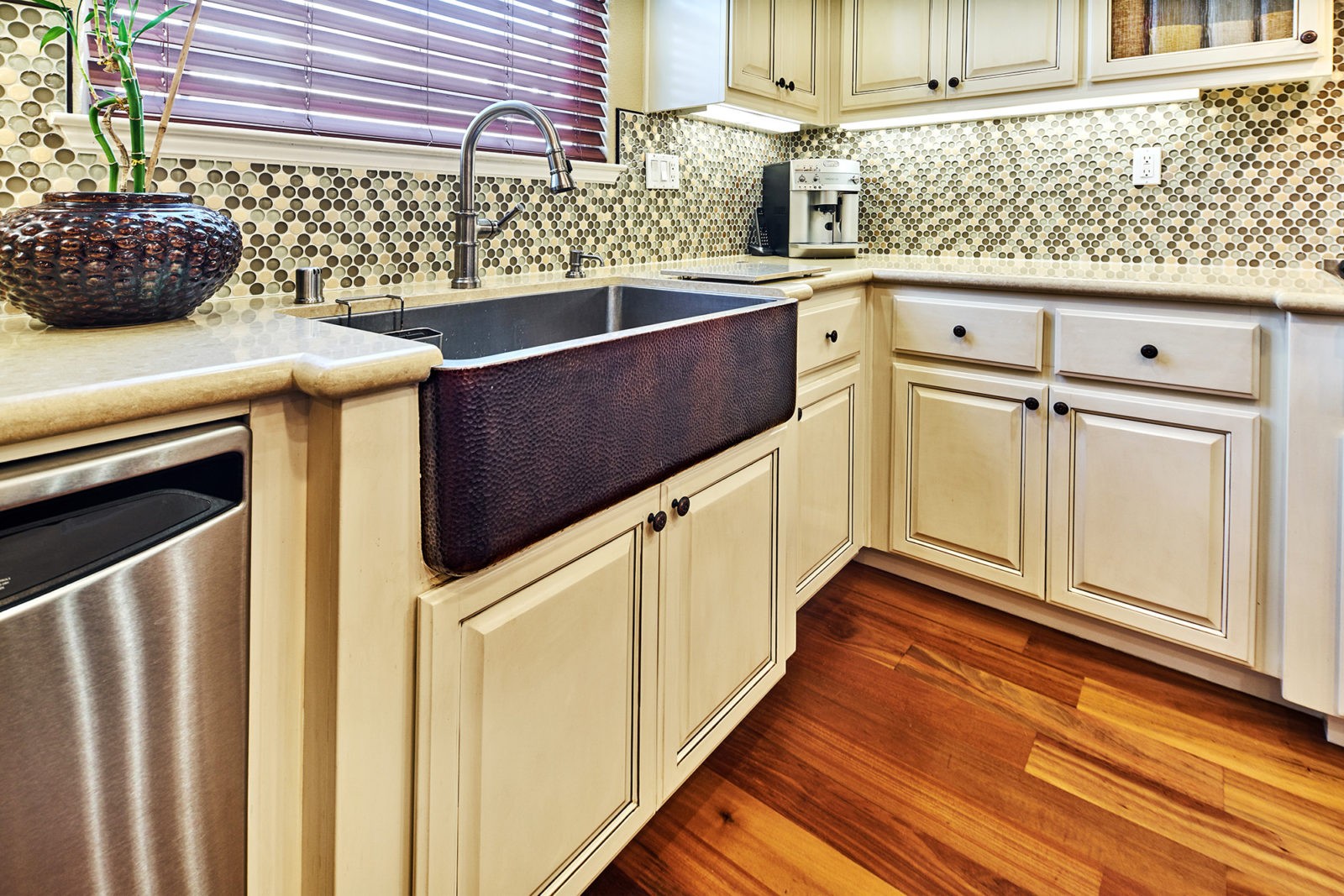
Set the mood and ambiance of any room with the right lighting.

You should have a minimum of 4 sources of light in a room.
Good lighting is all about layering different types of light in a room to create the effect you desire.
Do you want the room to be cozy? Bright? Dramatic?
In order to achieve the proper atmosphere, you need to first understand the different types of light and how they interact. Celebrity architect and designer David Rockwell says “The best-lit rooms have layers of light that blend well together.”1
Types of Light
The 3 types of lighting you should include in any room are ambient, task and accent lighting. Each one of them serves a specific – and different – purpose.
- Ambient
Ambient lighting refers to the general lighting needed to illuminate a room. Keep in mind that your lighting will need to be bright enough accommodate the functional intent of the room – such as preparing a meal in a kitchen or walking around and interacting comfortably in your living space. Recessed lights in the ceiling, flush or semi-flush mounted ceiling lights, or chandeliers are all examples of ambient light sources. - Task
The direct light you need to perform a specific activity is called task lighting. Requirements for this type of lighting depend upon what you will be doing in a specific space. In a kitchen, for example, under-cabinet lights could brighten your countertop workspace. However, task lighting in a home office might be a reading lamp on a desk. - Accent
Accent lighting is used to illuminate artwork and other design elements, or to enhance an interesting feature of a room. Built-in cabinet lighting, focus lighting on a painting, or wall-wash lighting to accentuate a feature wall are all examples of accent lighting.
Ideally, you should have a minimum of 4-6 sources of light for ambient lighting – depending on the room size and the amount of light these sources give off. Once you have the ambient lighting in place, start to layer your task and accent lighting sources in a way that’s appropriate for the activity you’ll be performing in the room.
Considering Function
Determining the proper lighting for a given room depends upon how you’ll be using the space. Will you be preparing a meal, entertaining guests, or primarily sleeping? A kitchen would require a well-planned lighting scheme that includes overhead lighting, pendant lighting and task lighting for work surfaces. But you’d have different requirements for a living room that might include a combination of recessed lighting, table lamps and a wall-wash.
Creating Ambiance
You can change the mood in the room immediately by adjusting the brightness of the lighting. Dimming the light via a dimmer switch or a lampshade creates a cozy feel, while bright lighting produces a more casual effect.
Now that you understand a bit more about the different types of lighting and how they can be manipulated to create ambiance, evaluate your own living space. Is your existing lighting creating the effect you want? If not, following the advice above could help you make the appropriate lighting adjustments.
To learn more about what you need to consider when choosing lighting, contact Sheeja today.

Task lighting, such as the under-cabinet lights above, enables you to see what you’re doing while you perform a task.

Accent lighting adds drama and illuminates items in a display cabinet.

